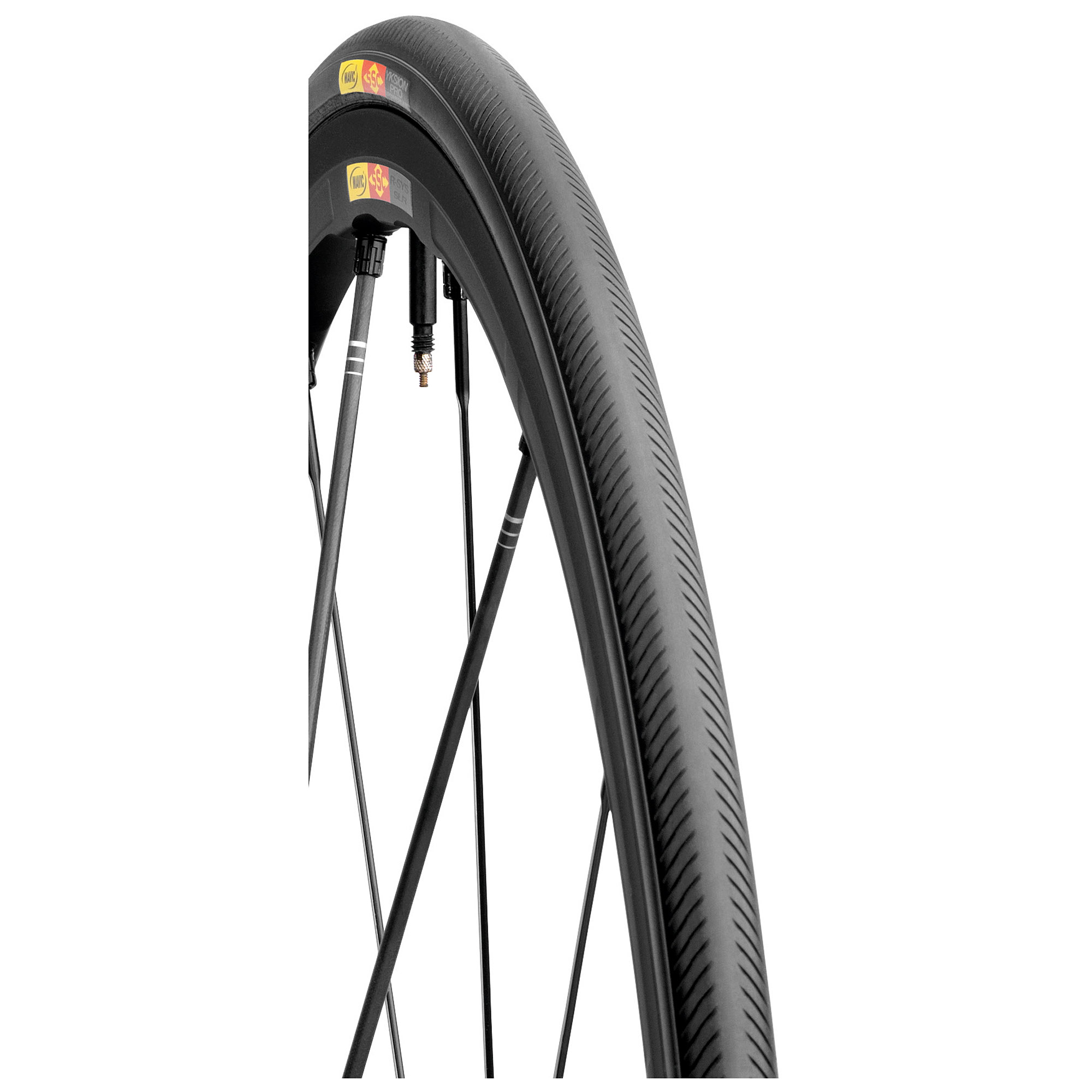Those were my exact words I said while face to face with the Mavic Tech representative at the last Seattle Bike Expo. I could tell by the scowl on his face that the conversation was about to come off the rails, but I wasn’t trying to be antagonistic. I was merely stating the truth, which is that Mavic as a company doesn’t cater to anyone other than the racer or wannabe. Long gone are the days when Mavic shared in the French cyclotouriste tradition of sturdy yet light touring product. Sure the A719 is a great touring rim, double-eyelet with durable, long-wearing sidewalls, but they’ve got nothing between a 565gr rim like that and the 435gr Open Pro. The cycling market could do with a modern MA40 rim. But Mavic has already become convinced that the real money is selling complete wheel “systems” and accessories. Still, though they practically invented the market for wheel systems, Mavic has a penchant for ignoring the direction of the cycling market.
The exact sticking point I had is that while much revered Ksyrium series of wheels had been a great seller for my company, I really wished that Mavic would either sell a separate, conventional hub (like a 32H or 36H) or a wheel system that I could sell to sport-tourers or clydesdale-category cyclists. I said that if such a wheelset existed from Mavic, I could easily sell it at the $1000 price point. His response was, “Why don’t you just sell them Ksyrium SLs?”
Really, mate? Listen, I admit that Ksyrium SL wheelsets, with their “Zircalloy” aluminium spokes, don’t fail at nearly the rate that they did in the early generations, but nobody trusts 18-20 alloy spokes as much as 32-36 stainless steel spokes per wheel when long distance touring. In many environments, the alloy nipples will seize to the alloy spoke and rims within a couple seasons. The Ksyrium rims are too narrow to ideally mount tires bigger than 28-32mm. I also said that the discontinuation of ceramic coated rims in the Open Pro class and touring rim class wasn’t going to be filled by wheel systems using Exalith surface treatment…if those wheel systems cost $2000 or more. Mavic wants you to believe that their Ksyrium “multi-purpose” wheel systems can be all things to all riders, and that is just not so. I could see it was a lost cause to jam any feedback up the command chain, but for the 2013 model year Mavic attempts to force product managers and consumers to eat an even less palatable marketing ploy: tyres.
That’s right. All Mavic road wheel systems are sold with tyres now. Last year Mavic rolled out their new line of tyres, clincher and tubular. They all have absurd names like Yksion and Aksion, and they are manufactured in Asia (as are most tyres, admittedly). I have ridden the Yksion GripLink (front) and Yksion PowerLink (rear), and I have to say that they were decent tyres. They rolled fast, gripped ok in the turns, but they seemed to be vulnerable to cuts, perhaps even more so than the reputably fragile Michelin Pro 3. Mavic claimed to have spent 3-4yrs developing the tyre line when they introduced it, and that seemed plausible to me. Many companies work with a 3 yr product cycle; so what? But one year after intro they replaced the Yksion tyres with Yksion Pro versions. They spend years developing a product and then replace it after one year? That doesn’t sound like they had a lot of confidence in it. And how are the new Yksion Pro tyres? Well, they’re supposed to be lighter, but that may be because the 23mm version actually measures just 21mm. And if anything they seem to be even more fragile. So they’re throw away tyres, why should you care? Because along with the tyres, now in 2013 the price of Ksyrium Elite wheels jumps from $680 to $800. Sure, some of that might be the inexorable upward march of retail prices, but a good chunk is supposed to be those shitty tyres.
So now not only does one wheel type suit every rider, but one tyre does the same? That’s bullshit. I don’t care if the entry level Aksium wheelset comes with shite tyres; those wheels are really just meant for the OEM market anyways. But not for wheels at the Ksyrium Elite and SL level or above.
Recently, the market for performance rims has begun moving away from the 25 year old trend of skinny rims (~19-20mm) and moving back to 22-23mm as a clincher rim standard. Hed, Zipp, and other rim brands have demonstrated that the wider rims better support the tyre carcass, prevent the sidewalls from squishing during cornering. Further, the wider rim expands the effective width of the tyre, giving more volume for a better ride and lower rolling resistance (wider tyres in general having been comprehensively tested as having lower resistance than skinny). Mavic has nothing to offer like this.
In the realm of aero rims/wheel systems, wide toroid shape rims have taken over for a different reason. Current aero design theory acknowledges sidewinds play a much greater role than originally acknowledged. The toroid shape scores better at greater yaw angles than the traditional teardrop shapes. Mavic has only just gotten onto revamping their aero wheel systems with the new Cosmic Carbone 80. Here I will admit that Mavic’s claim of integrating the tyre into the wheel system seems plausible because an 80mm deep aero wheel is decidedly single purpose. A tyre that blends into the rim should decrease aerodynamic drag, to perhaps some small extent. But in every other situation, Mavic’s claim of tyre integration is just marketing hokum that they plan on ramming down your throat.
…We're riding townies, adventure, and mountain bikes. Find recommendations on our store page. As Amazon Associates we earn from qualifying purchases.
